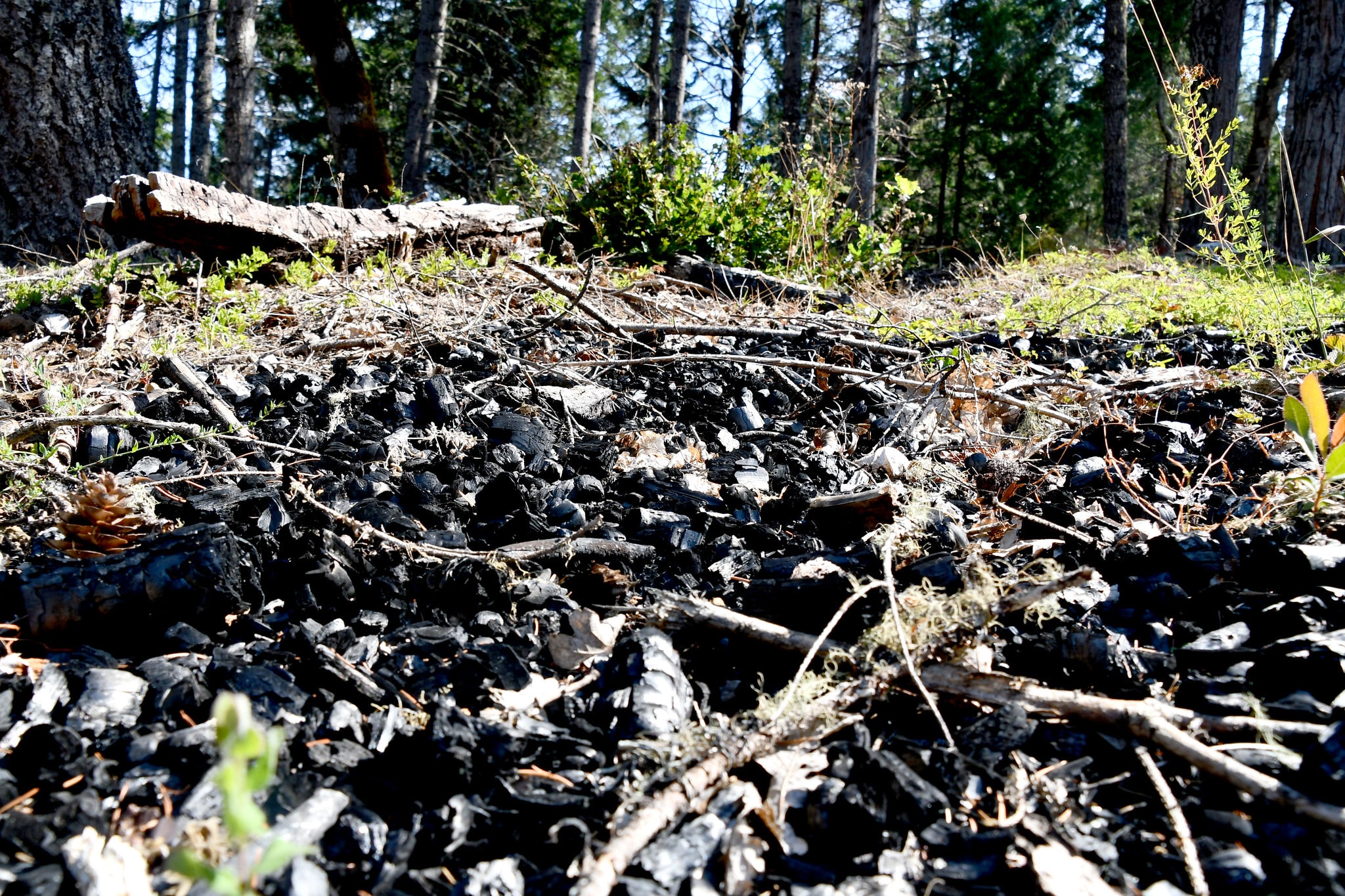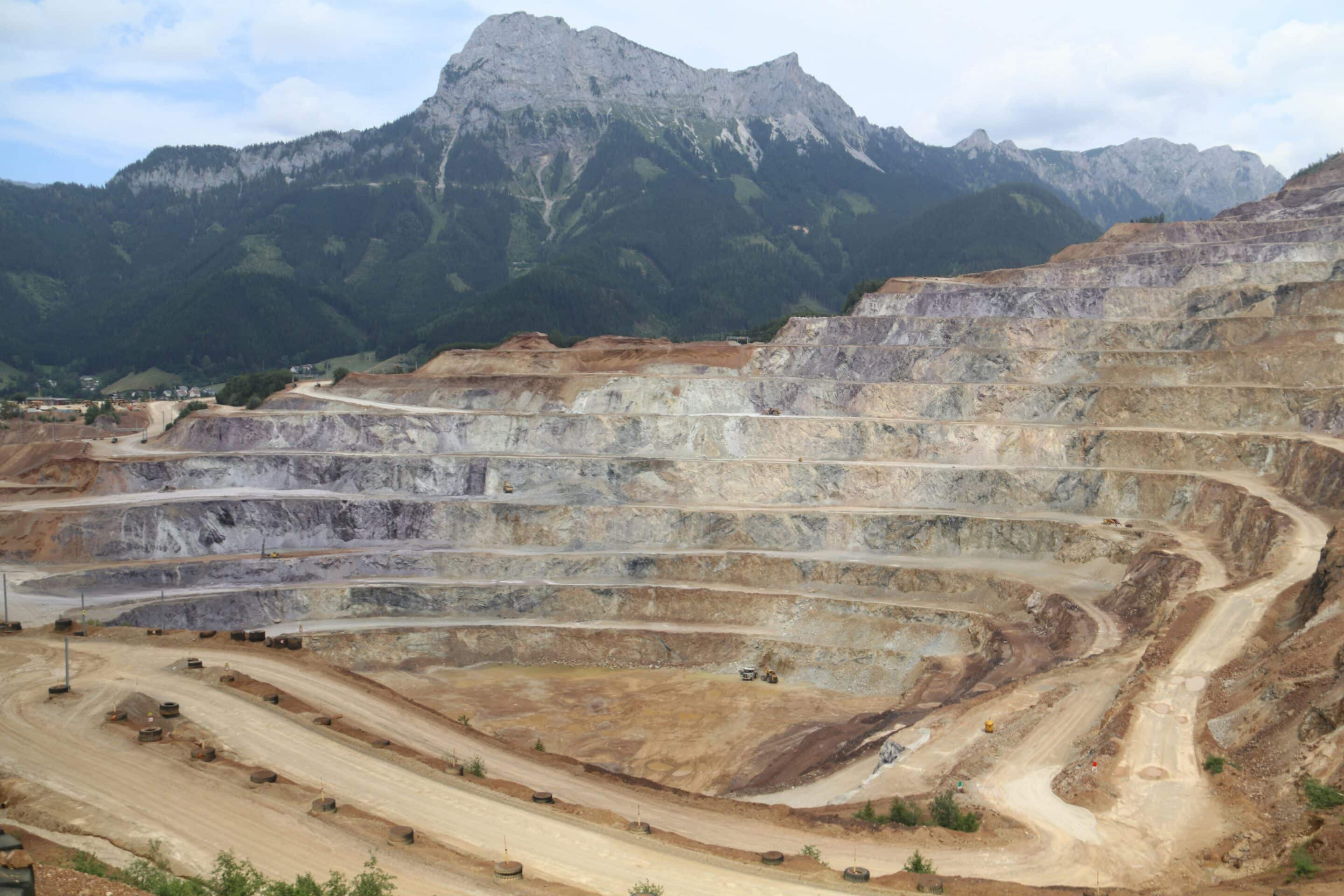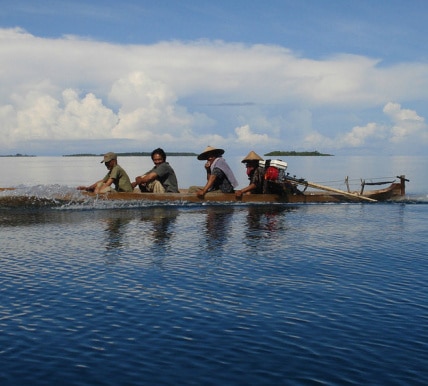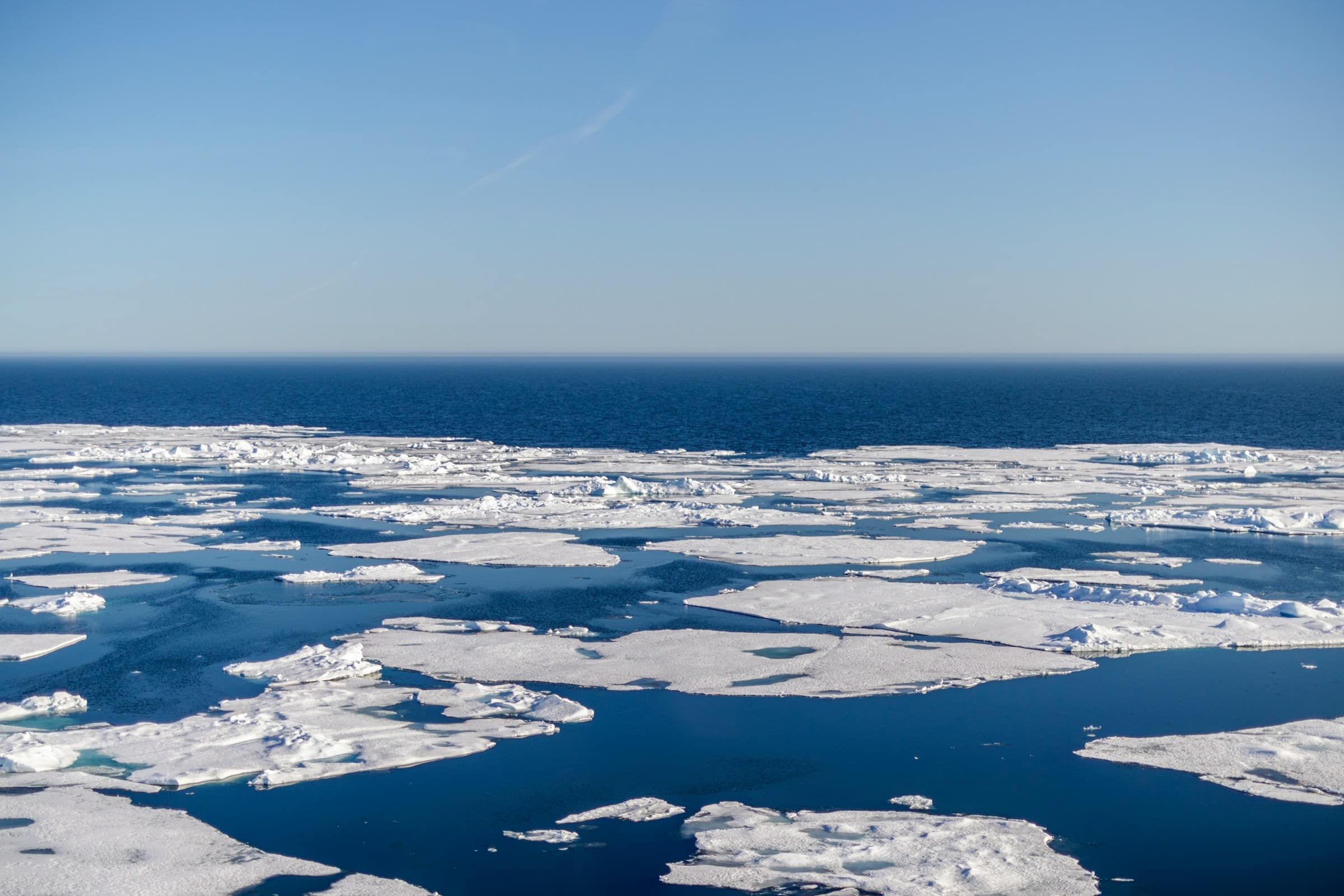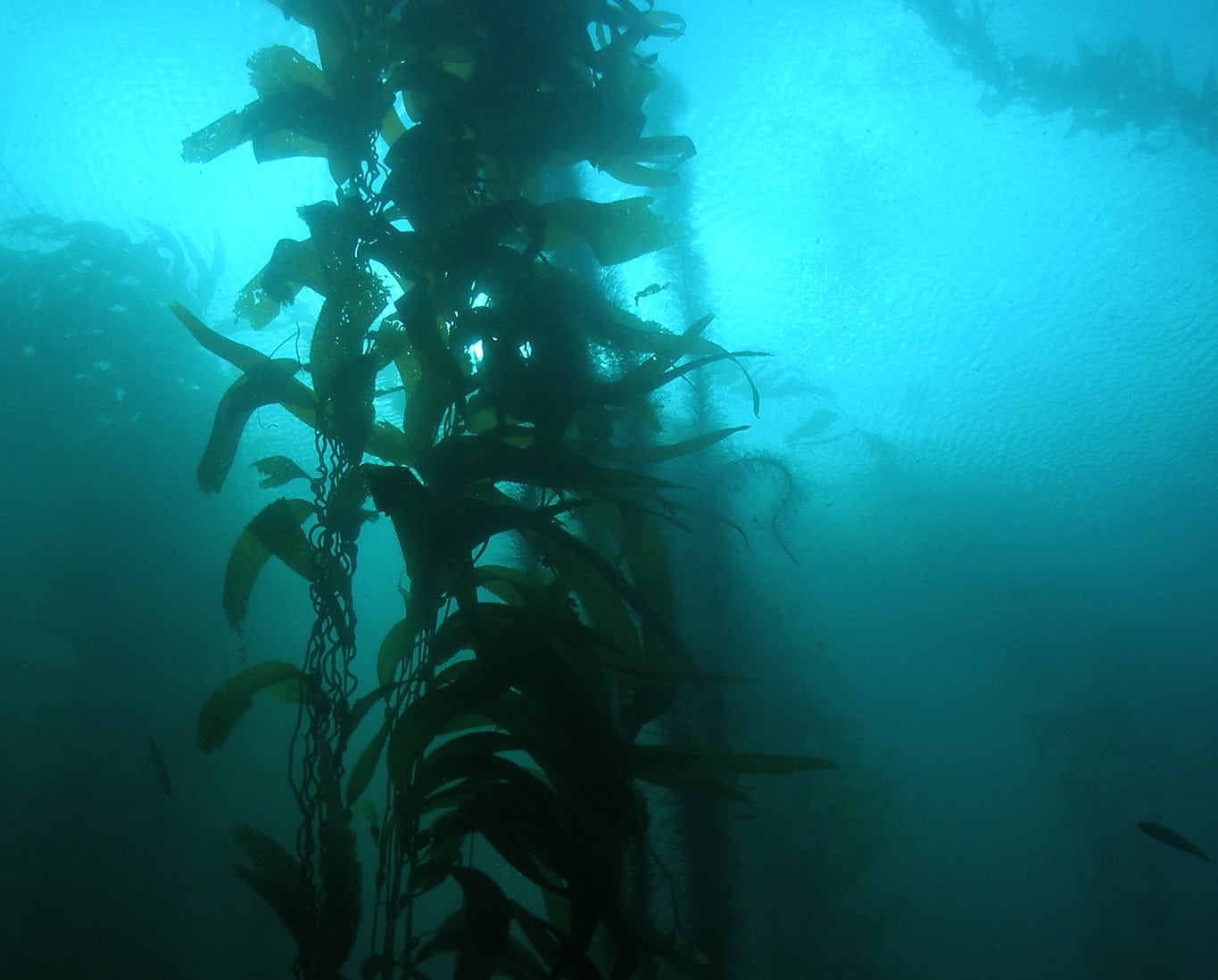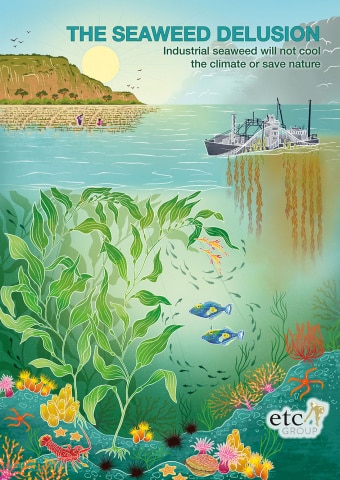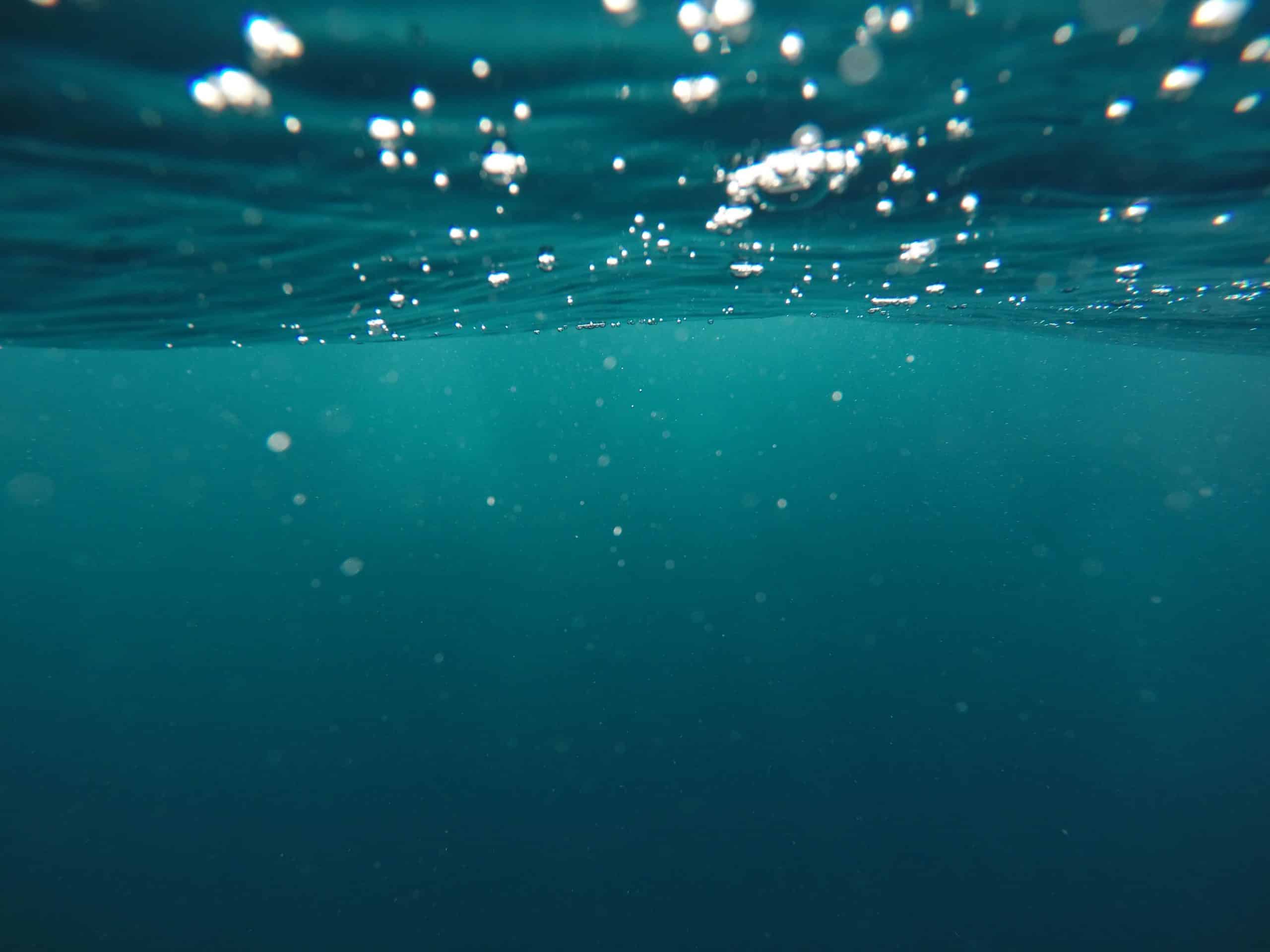Seaweed Farming and Biomass Sinking
Type
Areas of deployment
Proposal
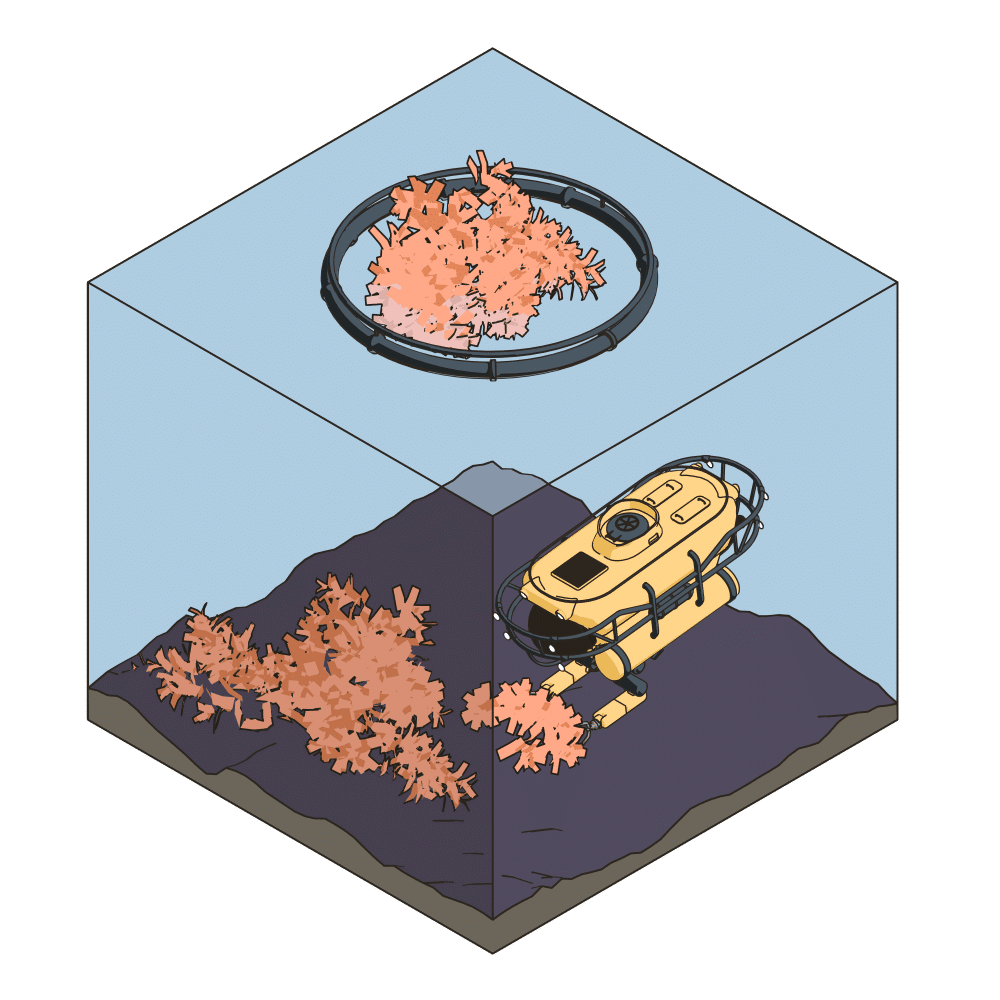
Featured project
Show on map
Latest technology update
Show update
Description and purpose of the technology
In recent years hundreds of companies have turned their attention to commercial seaweed farming—at least 500 since the signing of the Paris climate agreement in 2015. One of the major drivers is growing species such as kelp and sargassum on an industrial scale as a Carbon Dioxide Removal (CDR) climate mitigation strategy. Advocates of seaweed farming and biomass sinking, where seaweed and other types of biomass are sunk to the seafloor in order to store the carbon they contain, are betting on the promise of generating revenue from tradable carbon credits for sequestering carbon dioxide. Proponents claim that the carbon sucked out of the atmosphere as the seaweed grows can be stored long-term when it sinks to the seafloor, when the seaweed is converted into products or in restored seaweed-rich ecosystems.
However, these claims are based on a number of false assumptions, such as that seaweed is fast growing (for example that kelp can grow two to three feet in a day), that seaweed farming is widely scalable and that growing seaweed can sequester carbon over climate-relevant timescales.
Companies aiming to grow seaweed industrially in order to sell carbon offsets plan to do so either in traditional nearshore seaweed farms, where the seaweed is cultivated and then dumped offshore, or in the deep ocean using tethered, free-floating or automated offshore growing platforms. To stimulate the growth of seaweed, some companies are also investing in other geoengineering technologies such as artificial upwelling, even when studies have warned of the severe environmental and socio-political risks of the technology.
Many companies are also combining farming macroalgae at sea with biomass sinking, where seaweed species are grown in an open-ocean location in order to sink it into the deep ocean. Other companies are planning to harvest naturally-occuring “nuisance” seaweeds. Proposed seaweed sinking techniques include using large nets, autonomous robotic submarines and wooden buoys, to transport seaweed into deep enough water for it to then sink to the sea floor.
Although most biomass sinking projects involve sinking seaweed, terrestrial biomass such as wood and fast-growing species such as bamboo are also being considered by a number of companies. For example, the now defunct start-up Running Tide announced plans to grow kelp on buoys made from terrestrial biomass, but its initial sales of carbon credits involved dumping large quantities of woodchip into the ocean off the coast of Iceland.
Some companies also promise that they will restore underwater kelp forests and protect marine biodiversity by promising to address an acute ecological problem such as the loss of natural kelp forests. These firms are hoping to benefit from the private financing of ecosystem services in future biodiversity offset markets. However, many Indigenous and traditional communities strongly resist reducing ecosystem processes and their cultural relationships with the ocean to the financial language of ecosystem services and biodiversity pricing.
Actors involved
Since the signing of the Paris Agreement on Climate Change in 2015, industrial seaweed production has been attracting million dollar investments with deals across America and Europe totalling more than $200 million between 2021 and 2023. New seaweed trade lobby groups such as the Global Seaweed Coalition and Seaweed for Europe, which was launched in 2020 by SYSTEMIQ, a UK-based, self-styled “systems change” corporation that runs several other industry focused coalitions, have been promising investors major revenues from the sale of carbon credits for carbon dioxide removals.
Philanthropic funds linked to big tech and venture capitalists such as Amazon’s Right now Climate Fund have also invested significantly in the scale-up and development of seaweed projects. Other big tech players include Microsoft, Xprize Foundation (Elon Musk), Y Combinator, Shopify, and Stripe. Multilateral development banks such as the Asian Development Bank have also been providing finance to seaweed projects, as have large conservation organisations such as The Nature Conservancy and WWF. Multinational giants such as the mining company De Beers have also been financing seaweed start-ups in order to offset their emissions and meet net-zero targets.
Notable examples of influential geoengineering proponents lobbying for seaweed farming to be scaled-up include Victor Smetacek (scientific advisor to and founder of Seafields, a company aiming to build the world’s largest sargassum farm), investor Peter Fiekowsky (Foundation for Climate Restoration) and Sir David King, former chair of the Cambridge Center for Climate Repair (CCCR). US-based ClimateWorks Foundation is another ubiquitous philanthropic presence which funds Ocean Visions, a collaboration by several universities and institutions in the US that lobbies for research into various marine geoengineering techniques, including seaweed farming and sinking.
Alongside the growth of seaweed lobby groups, numerous start-ups have launched industrial seaweed cultivation projects, many of which are led by individuals with backgrounds in software, finance, engineering and media. This has led other seaweed farmers to express concerns about the inexperience of such companies with coastal ecosystems and the complexities of farming. Examples of seaweed start-ups with plans for large-scale seaweed farms include:
- Kelp Blue, which recently received a US$2 million investment from diamond mining giant DeBeers as part of its net-zero strategy, and is working towards establishing a 70,000 hectare seaweed farm at Luderitz off the coast of Namibia.
- Seafields, which plans to grow sargassum in floating pens in what would be the world’s largest sargassum aquafarm, which would cover 94,000 km2 – an area slightly larger than Portugal. Seafields is also proposing to create artificial upwelling with modified Stommel pipes, which are driven by temperature and salinity gradients and draw deep nutrient-rich water to the surface in order to provide enough nutrients for its open-ocean seaweed pens.
- Phykos and Pull to Refresh, which are examples of companies that are developing open-ocean farming platforms and ocean-going autonomous vessels to grow, collect and sink kelp.
A large number of new seaweed start-ups are driven by future carbon credit sales and, in the case of companies involved in biomass sinking, promise that the carbon they sink will remain safely on the seafloor for 1,000 years or more. Examples include:
- Carboniferous Inc: “Effectively 100% of the biomass carbon that reaches the deep basin is trapped for at least 1,000 years“;
- Phykos PBC: “We cultivate seaweed and sink it deep in the ocean, […] safely sequestering excess carbon for 1,000 years or more“;
- GigaBlue Ltd: “Carbon removal by Gigablue is verified to remain chemically and physically stable in its bio-natural form for over 1,000 years“;
- Arbon Earth AB: “Binding the carbon to the deep sea floor for hundreds to millions of years“;
- Rewind: “Stored on the bottom of the sea, the carbon will be sequestered for thousands of years“.
Impacts of the technology
Under closer scrutiny, most of the arguments being used to promote “blue carbon” [1] seaweed projects – which include industrial-scale farming and sinking seaweed, through to “rewilding” and restoration projects – fail to stack up. For example, it has been found that seaweed ecosystems can be carbon sources rather than sinks – potentially causing up to 150 tonnes of CO2 emissions/km²/year, which undermines sequestration claims. Another study has shown that while seaweed plants may fix carbon dioxide and drop some of that into sediments, seaweed ecosystems appear to be net producers of CO2 overall.
Impacts on coastal communities
To geoengineering proponents, the vast size of the oceans is perceived as an untapped potential. However, in reality, the areas most suitable for seaweed farming are the coasts. For seaweed farms to have even a small climate impact, they would need to occupy a significant portion of global coastlines. One study suggests that to sequester just 0.2% of global CO2 emissions would require an ocean seaweed farm equivalent to a 100-metre-wide belt around 63% of the world’s coastline. Another recent study estimated that it would take about one million square kilometres of the most productive ocean regions, an area the size of Ethiopia, to grow enough seaweed to remove one gigaton of carbon from the atmosphere each year. Outside of the most productive marine waters this area would need to be tripled.
Seaweed farming on this scale would be an unprecedented occupation of coastal territories, causing displacement and eroding vital food systems and livelihoods. Indigenous Peoples, traditional communities and fisherfolk reliant on coastal ecosystems would be considerably impacted by industrial seaweed scaleup plans.
Impacts of large-scale seaweed farming on biodiversity and marine ecosystem
Furthermore, the race to develop large-scale industrial seaweed farming could have devastating impacts on marine life and oceanic ecosystems, some of which have already been observed in established Chinese seaweed farms. Industrial seaweed farming can harm existing coastal habitats of seagrasses, maerl (coral-like algae) and kelp, and alter coastal hydrodynamics (how water moves). The construction of seaweed mariculture facilities can also disrupt the ecological connectivity of marine species and, due to the high nutrient demand of large amounts of seaweed, nutrients can be diverted from other species, harming microalgae and corals. Changes in microalgae (e.g phytoplankton) activity and population can have negative effects on their carbon sequestration capacity, and increasing amounts of seaweed decomposition may also lead to increased release of methane and lower oxygen concentrations in seawater (hypoxia). Cultivated seaweeds grown in an open-ocean environment can also introduce invasive species and seaweed pests and diseases that can threaten wild populations. Additionally, there is also the threat of cross-contamination and loss of genetic diversity from monoculture seaweed farming.
Many reports and publications have poured cold water on the idea of seaweed farming as a climate mitigation strategy due to its likely environmental impacts, including the UNEP Seaweed Farming report in 2023, which found that “Seaweed farming has various environmental risks, including competition with wild habitats for nutrients and light, spillover of diseases and invasive species and genetic pollution from farms to the environment, and entanglement of marine megafauna from seaweed farming infrastructure such as ropes.”
The impacts of biomass sinking on sea-floor environments
Biomass sinking also brings its own set of impacts on deep ocean environments. Recent research has highlighted environmental concerns such as the lack of knowledge about the impact of these schemes on deep-sea ecosystems, and the fact that it is not known how seafloor microbial communities will react to large amounts of biomass being dumped. These concerns are especially true of projects planning to sink biomass on a larger scale. As only 5% of the seabed has been explored by humans, it is impossible to have a full understanding of or to effectively monitor the potential impacts of these projects on deep sea environments.
Reality check
The European Commission’s 2023 Blue Bioeconomy report concluded that: “Seaweed sinking for carbon sequestration purposes so far has no proof of positive environmental, climate or economic benefits. Hence, in the present state of knowledge, it should not be considered as a valid policy option […] Science is not robust enough for blue carbon credits to be extended to seaweed ecosystems and seaweed farming.” Despite this, numerous companies and start-ups are already conducting experiments and commercialising seaweed farming as a climate mitigation solution, with a view to benefitting from the sale of carbon credits.
There is also a concern that the push for ‘blue carbon’ seaweed farming will act as a political ‘latch-lifter’ for marine CDR approaches more generally, which could in turn lead to the relaxation of restrictions imposed on ocean fertilisation (currently under a global moratorium imposed by the UN Convention on Biological Diversity (CBD) and the London Convention/London Protocol on marine pollution). Additionally, seaweed farming proponents who promise that they will rescue ocean biodiversity are hoping that the CBD’s Kunming-Montreal Global Biodiversity Framework (GBF), signed in 2022, will unleash more biodiversity financing and future biodiversity credits.
Further reading
ETC Group, The Seaweed Delusion, available at: https://etcgroup.org/content/seaweed-delusion
Geoengineering Monitor, Dumping biomass in the open ocean is an unproven carbon removal strategy, but that hasn’t stopped companies from selling carbon credits from it, available at: https://www.geoengineeringmonitor.org/2024/04/marine-geo-biomass-sinking/
End notes
[1] Blue Carbon refers to CO2 stored in coastal ecosystems, notably, mangroves, tidal marshes and seagrass meadows. The term, introduced by the UN in 2009, implied that coastal ecosystems through their ability to capture and store carbon can provide ‘services’ in the fight against climate change and therefore, the need to ‘value’ this service and create mechanisms to allow trade in ‘blue carbon’. https://www.tni.org/files/publication-downloads/final_tni_issue_brief_blue_carbon-1.pdf
Seaweed Farming and Biomass Sinking
TIPO
Zonas de despliegue
Propuesta

Proyecto destacado
Mostrar en el mapa
Última actualización de la tecnología
Mostrar actualización
Descripción y propósito de la tecnología
In recent years hundreds of companies have turned their attention to commercial seaweed farming—at least 500 since the signing of the Paris climate agreement in 2015. One of the major drivers is growing species such as kelp and sargassum on an industrial scale as a Carbon Dioxide Removal (CDR) climate mitigation strategy. Advocates of seaweed farming and biomass sinking, where seaweed and other types of biomass are sunk to the seafloor in order to store the carbon they contain, are betting on the promise of generating revenue from tradable carbon credits for sequestering carbon dioxide. Proponents claim that the carbon sucked out of the atmosphere as the seaweed grows can be stored long-term when it sinks to the seafloor, when the seaweed is converted into products or in restored seaweed-rich ecosystems.
However, these claims are based on a number of false assumptions, such as that seaweed is fast growing (for example that kelp can grow two to three feet in a day), that seaweed farming is widely scalable and that growing seaweed can sequester carbon over climate-relevant timescales.
Companies aiming to grow seaweed industrially in order to sell carbon offsets plan to do so either in traditional nearshore seaweed farms, where the seaweed is cultivated and then dumped offshore, or in the deep ocean using tethered, free-floating or automated offshore growing platforms. To stimulate the growth of seaweed, some companies are also investing in other geoengineering technologies such as artificial upwelling, even when studies have warned of the severe environmental and socio-political risks of the technology.
Many companies are also combining farming macroalgae at sea with biomass sinking, where seaweed species are grown in an open-ocean location in order to sink it into the deep ocean. Other companies are planning to harvest naturally-occuring “nuisance” seaweeds. Proposed seaweed sinking techniques include using large nets, autonomous robotic submarines and wooden buoys, to transport seaweed into deep enough water for it to then sink to the sea floor.
Although most biomass sinking projects involve sinking seaweed, terrestrial biomass such as wood and fast-growing species such as bamboo are also being considered by a number of companies. For example, the now defunct start-up Running Tide announced plans to grow kelp on buoys made from terrestrial biomass, but its initial sales of carbon credits involved dumping large quantities of woodchip into the ocean off the coast of Iceland.
Some companies also promise that they will restore underwater kelp forests and protect marine biodiversity by promising to address an acute ecological problem such as the loss of natural kelp forests. These firms are hoping to benefit from the private financing of ecosystem services in future biodiversity offset markets. However, many Indigenous and traditional communities strongly resist reducing ecosystem processes and their cultural relationships with the ocean to the financial language of ecosystem services and biodiversity pricing.
Actores involucrados
Since the signing of the Paris Agreement on Climate Change in 2015, industrial seaweed production has been attracting million dollar investments with deals across America and Europe totalling more than $200 million between 2021 and 2023. New seaweed trade lobby groups such as the Global Seaweed Coalition and Seaweed for Europe, which was launched in 2020 by SYSTEMIQ, a UK-based, self-styled “systems change” corporation that runs several other industry focused coalitions, have been promising investors major revenues from the sale of carbon credits for carbon dioxide removals.
Philanthropic funds linked to big tech and venture capitalists such as Amazon’s Right now Climate Fund have also invested significantly in the scale-up and development of seaweed projects. Other big tech players include Microsoft, Xprize Foundation (Elon Musk), Y Combinator, Shopify, and Stripe. Multilateral development banks such as the Asian Development Bank have also been providing finance to seaweed projects, as have large conservation organisations such as The Nature Conservancy and WWF. Multinational giants such as the mining company De Beers have also been financing seaweed start-ups in order to offset their emissions and meet net-zero targets.
Notable examples of influential geoengineering proponents lobbying for seaweed farming to be scaled-up include Victor Smetacek (scientific advisor to and founder of Seafields, a company aiming to build the world’s largest sargassum farm), investor Peter Fiekowsky (Foundation for Climate Restoration) and Sir David King, former chair of the Cambridge Center for Climate Repair (CCCR). US-based ClimateWorks Foundation is another ubiquitous philanthropic presence which funds Ocean Visions, a collaboration by several universities and institutions in the US that lobbies for research into various marine geoengineering techniques, including seaweed farming and sinking.
Alongside the growth of seaweed lobby groups, numerous start-ups have launched industrial seaweed cultivation projects, many of which are led by individuals with backgrounds in software, finance, engineering and media. This has led other seaweed farmers to express concerns about the inexperience of such companies with coastal ecosystems and the complexities of farming. Examples of seaweed start-ups with plans for large-scale seaweed farms include:
- Kelp Blue, which recently received a US$2 million investment from diamond mining giant DeBeers as part of its net-zero strategy, and is working towards establishing a 70,000 hectare seaweed farm at Luderitz off the coast of Namibia.
- Seafields, which plans to grow sargassum in floating pens in what would be the world’s largest sargassum aquafarm, which would cover 94,000 km2 – an area slightly larger than Portugal. Seafields is also proposing to create artificial upwelling with modified Stommel pipes, which are driven by temperature and salinity gradients and draw deep nutrient-rich water to the surface in order to provide enough nutrients for its open-ocean seaweed pens.
- Phykos and Pull to Refresh, which are examples of companies that are developing open-ocean farming platforms and ocean-going autonomous vessels to grow, collect and sink kelp.
A large number of new seaweed start-ups are driven by future carbon credit sales and, in the case of companies involved in biomass sinking, promise that the carbon they sink will remain safely on the seafloor for 1,000 years or more. Examples include:
- Carboniferous Inc: “Effectively 100% of the biomass carbon that reaches the deep basin is trapped for at least 1,000 years“;
- Phykos PBC: “We cultivate seaweed and sink it deep in the ocean, […] safely sequestering excess carbon for 1,000 years or more“;
- GigaBlue Ltd: “Carbon removal by Gigablue is verified to remain chemically and physically stable in its bio-natural form for over 1,000 years“;
- Arbon Earth AB: “Binding the carbon to the deep sea floor for hundreds to millions of years“;
- Rewind: “Stored on the bottom of the sea, the carbon will be sequestered for thousands of years“.
Impactos de la tecnología
Under closer scrutiny, most of the arguments being used to promote “blue carbon” [1] seaweed projects – which include industrial-scale farming and sinking seaweed, through to “rewilding” and restoration projects – fail to stack up. For example, it has been found that seaweed ecosystems can be carbon sources rather than sinks – potentially causing up to 150 tonnes of CO2 emissions/km²/year, which undermines sequestration claims. Another study has shown that while seaweed plants may fix carbon dioxide and drop some of that into sediments, seaweed ecosystems appear to be net producers of CO2 overall.
Impacts on coastal communities
To geoengineering proponents, the vast size of the oceans is perceived as an untapped potential. However, in reality, the areas most suitable for seaweed farming are the coasts. For seaweed farms to have even a small climate impact, they would need to occupy a significant portion of global coastlines. One study suggests that to sequester just 0.2% of global CO2 emissions would require an ocean seaweed farm equivalent to a 100-metre-wide belt around 63% of the world’s coastline. Another recent study estimated that it would take about one million square kilometres of the most productive ocean regions, an area the size of Ethiopia, to grow enough seaweed to remove one gigaton of carbon from the atmosphere each year. Outside of the most productive marine waters this area would need to be tripled.
Seaweed farming on this scale would be an unprecedented occupation of coastal territories, causing displacement and eroding vital food systems and livelihoods. Indigenous Peoples, traditional communities and fisherfolk reliant on coastal ecosystems would be considerably impacted by industrial seaweed scaleup plans.
Impacts of large-scale seaweed farming on biodiversity and marine ecosystem
Furthermore, the race to develop large-scale industrial seaweed farming could have devastating impacts on marine life and oceanic ecosystems, some of which have already been observed in established Chinese seaweed farms. Industrial seaweed farming can harm existing coastal habitats of seagrasses, maerl (coral-like algae) and kelp, and alter coastal hydrodynamics (how water moves). The construction of seaweed mariculture facilities can also disrupt the ecological connectivity of marine species and, due to the high nutrient demand of large amounts of seaweed, nutrients can be diverted from other species, harming microalgae and corals. Changes in microalgae (e.g phytoplankton) activity and population can have negative effects on their carbon sequestration capacity, and increasing amounts of seaweed decomposition may also lead to increased release of methane and lower oxygen concentrations in seawater (hypoxia). Cultivated seaweeds grown in an open-ocean environment can also introduce invasive species and seaweed pests and diseases that can threaten wild populations. Additionally, there is also the threat of cross-contamination and loss of genetic diversity from monoculture seaweed farming.
Many reports and publications have poured cold water on the idea of seaweed farming as a climate mitigation strategy due to its likely environmental impacts, including the UNEP Seaweed Farming report in 2023, which found that “Seaweed farming has various environmental risks, including competition with wild habitats for nutrients and light, spillover of diseases and invasive species and genetic pollution from farms to the environment, and entanglement of marine megafauna from seaweed farming infrastructure such as ropes.”
The impacts of biomass sinking on sea-floor environments
Biomass sinking also brings its own set of impacts on deep ocean environments. Recent research has highlighted environmental concerns such as the lack of knowledge about the impact of these schemes on deep-sea ecosystems, and the fact that it is not known how seafloor microbial communities will react to large amounts of biomass being dumped. These concerns are especially true of projects planning to sink biomass on a larger scale. As only 5% of the seabed has been explored by humans, it is impossible to have a full understanding of or to effectively monitor the potential impacts of these projects on deep sea environments.
Visión realista
The European Commission’s 2023 Blue Bioeconomy report concluded that: “Seaweed sinking for carbon sequestration purposes so far has no proof of positive environmental, climate or economic benefits. Hence, in the present state of knowledge, it should not be considered as a valid policy option […] Science is not robust enough for blue carbon credits to be extended to seaweed ecosystems and seaweed farming.” Despite this, numerous companies and start-ups are already conducting experiments and commercialising seaweed farming as a climate mitigation solution, with a view to benefitting from the sale of carbon credits.
There is also a concern that the push for ‘blue carbon’ seaweed farming will act as a political ‘latch-lifter’ for marine CDR approaches more generally, which could in turn lead to the relaxation of restrictions imposed on ocean fertilisation (currently under a global moratorium imposed by the UN Convention on Biological Diversity (CBD) and the London Convention/London Protocol on marine pollution). Additionally, seaweed farming proponents who promise that they will rescue ocean biodiversity are hoping that the CBD’s Kunming-Montreal Global Biodiversity Framework (GBF), signed in 2022, will unleash more biodiversity financing and future biodiversity credits.
Lectura complementaria
ETC Group, The Seaweed Delusion, available at: https://etcgroup.org/content/seaweed-delusion
Geoengineering Monitor, Dumping biomass in the open ocean is an unproven carbon removal strategy, but that hasn’t stopped companies from selling carbon credits from it, available at: https://www.geoengineeringmonitor.org/2024/04/marine-geo-biomass-sinking/
Notas finales
[1] Blue Carbon refers to CO2 stored in coastal ecosystems, notably, mangroves, tidal marshes and seagrass meadows. The term, introduced by the UN in 2009, implied that coastal ecosystems through their ability to capture and store carbon can provide ‘services’ in the fight against climate change and therefore, the need to ‘value’ this service and create mechanisms to allow trade in ‘blue carbon’. https://www.tni.org/files/publication-downloads/final_tni_issue_brief_blue_carbon-1.pdf
